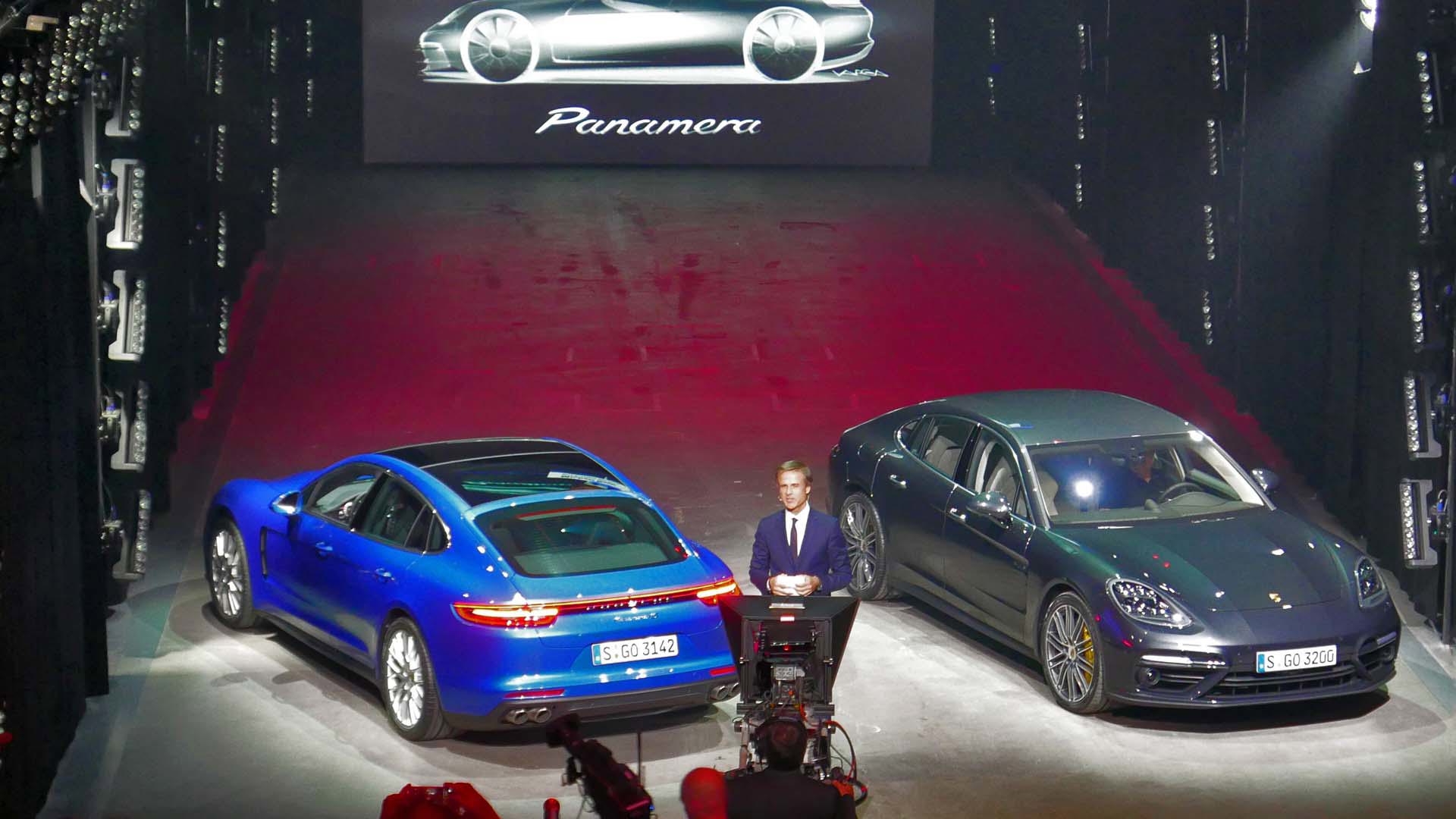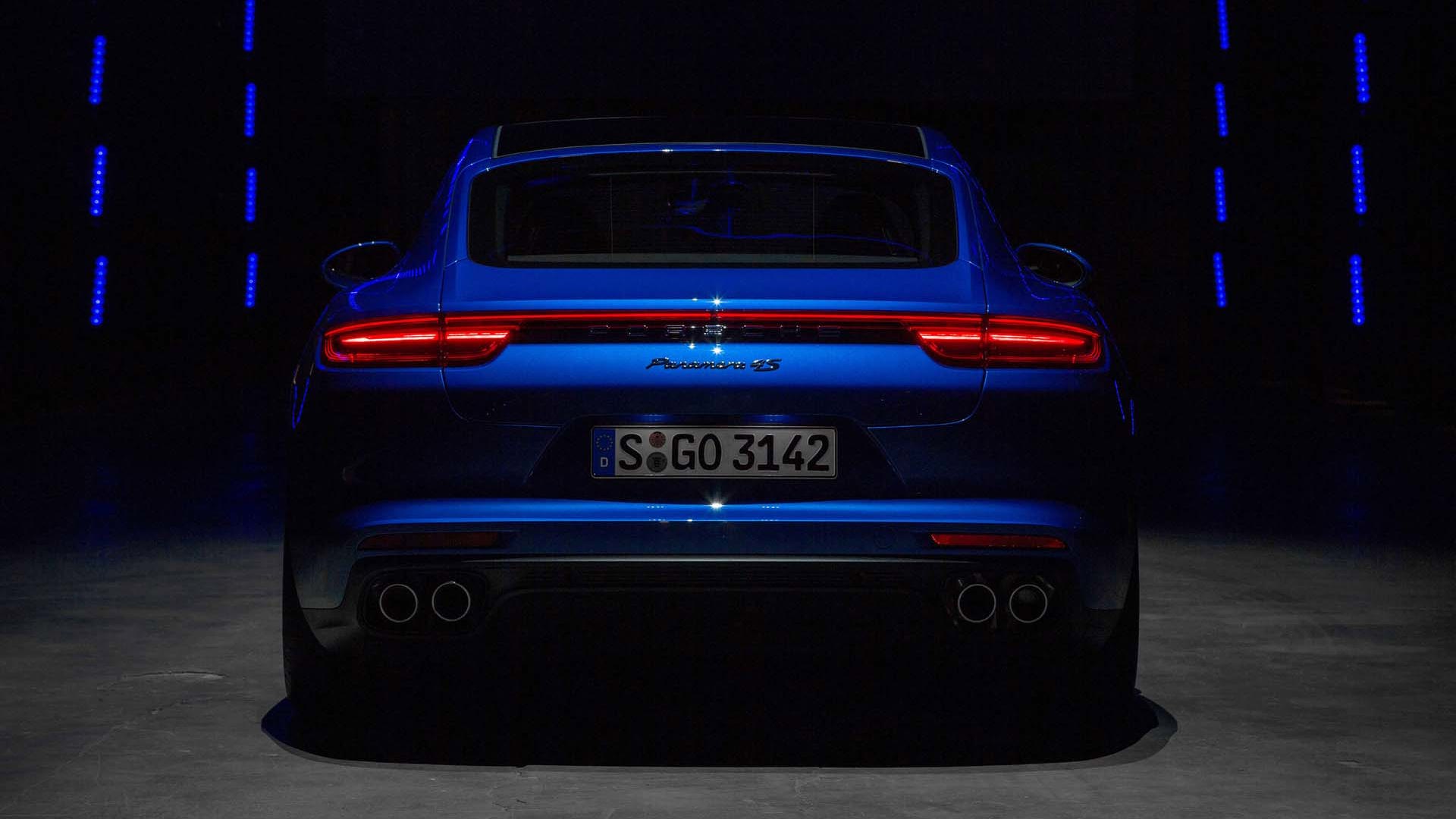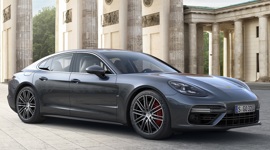Porsche has always enjoyed a complicated history of remaining deeply loyal to its own past design conceits while simultaneously making bold moves that push far beyond the boundaries of anything that could be reasonably called traditional. Witness the co-existence of the rear-engine 911 sports car, the Cayenne SUV and Panamera sedan – the first is a brand-defining anachronism unlike any other high-performance car on the market, while the latter two would have been completely unthinkable as members of the Porsche family during the initial 40 years of its existence.
The all-new 2017 Porsche Panamera revealed in Berlin, Germany, proves that the automaker has no intention of backing away from the four-door model that pushes the boundaries of what a Porsche truly is. Just as important is the new-look Panamera's declaration that while the company's team of stylists are willing to massage the executive car's sheet metal, the proud face of Porsche remains a prominent part of the sedan's character.
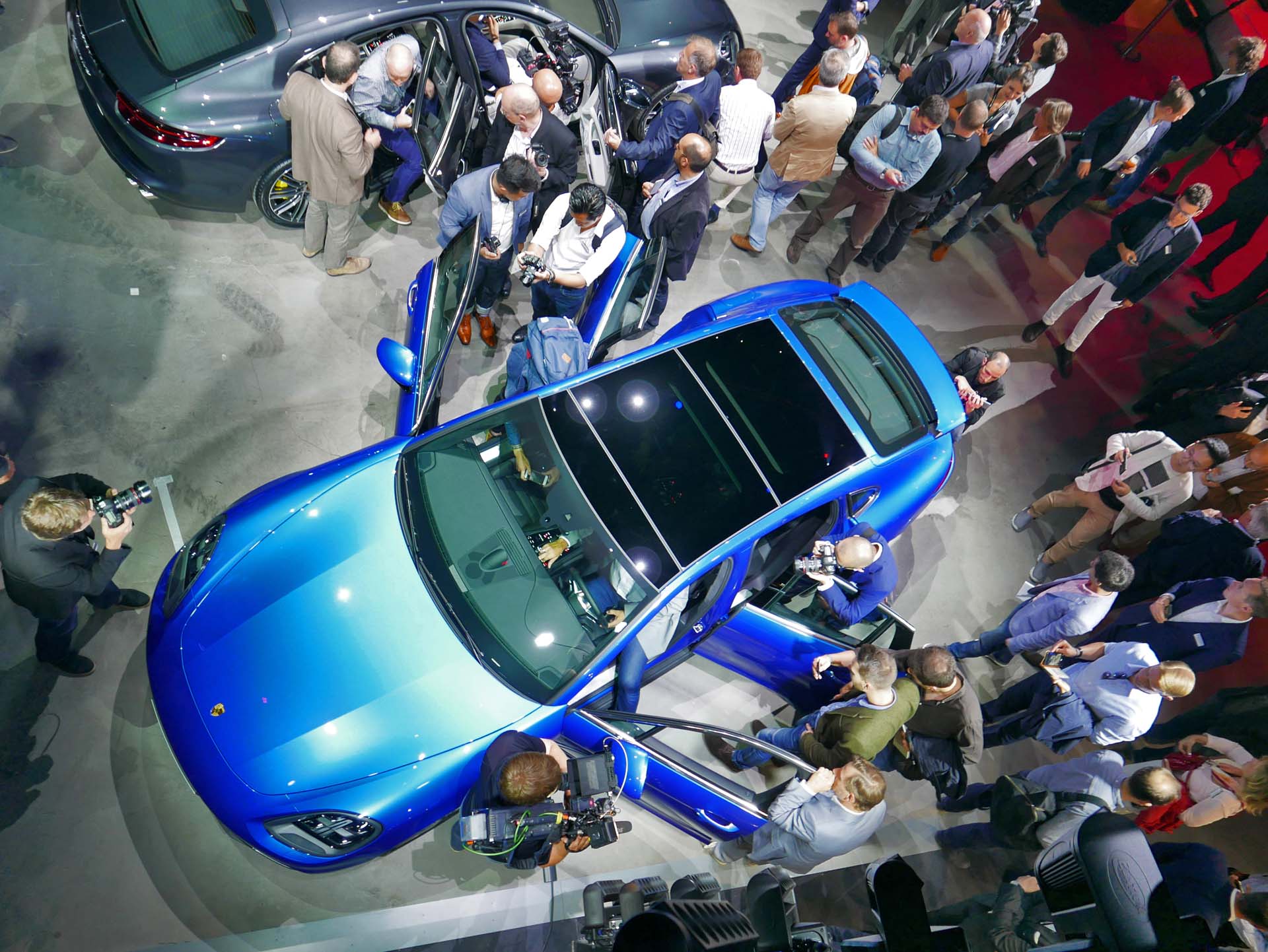
To be sure, the 911-influenced look of the 2017 Porsche Panamera is now much easier to digest. Although the tape measure reveals the car to be even more imposing than the first-generation version in almost every dimension, visually the Panamera comes across as sleeker than ever before, particularly from the rear, where a new smooth hatch and bumper treatment erases much of the awkward bulging of years past. Up front, it's a similar story, although the changes are much more subtle, with the same familiar grin riding a little bit lower to the ground than in 2016. Taken as a whole, the Panamera has outgrown its adolescent duckling phase and has emerged, if not the graceful swan, then certainly one that knows how to dress to its advantage.
Crack a door – front, rear, passenger, driver, it doesn't matter – and there's evidence of further new-think. Once the purveyor of more buttons than an 18th-century corset, the redesigned Porsche Panamera has made a decidedly forward-looking switch to touchscreens (terra incognita for most German automakers). Not just on the dashboard, either – although a large LCD display perches at the center of the Panamera's cockpit – but on the console that divides the two front seats itself. Yes, there are a few toggles remaining, but by and large much of the vehicle's functionality is now linked to a touch-sensitive panel (with an additional screen available for rear passengers looking to further customize their comfort). One wonders how easy this will be to use when wearing gloves, or without removing one's eyes from the road to verify that a selection has actually been made (absent the instant physical feedback of a click), but there's no denying that the setup looks stunning.
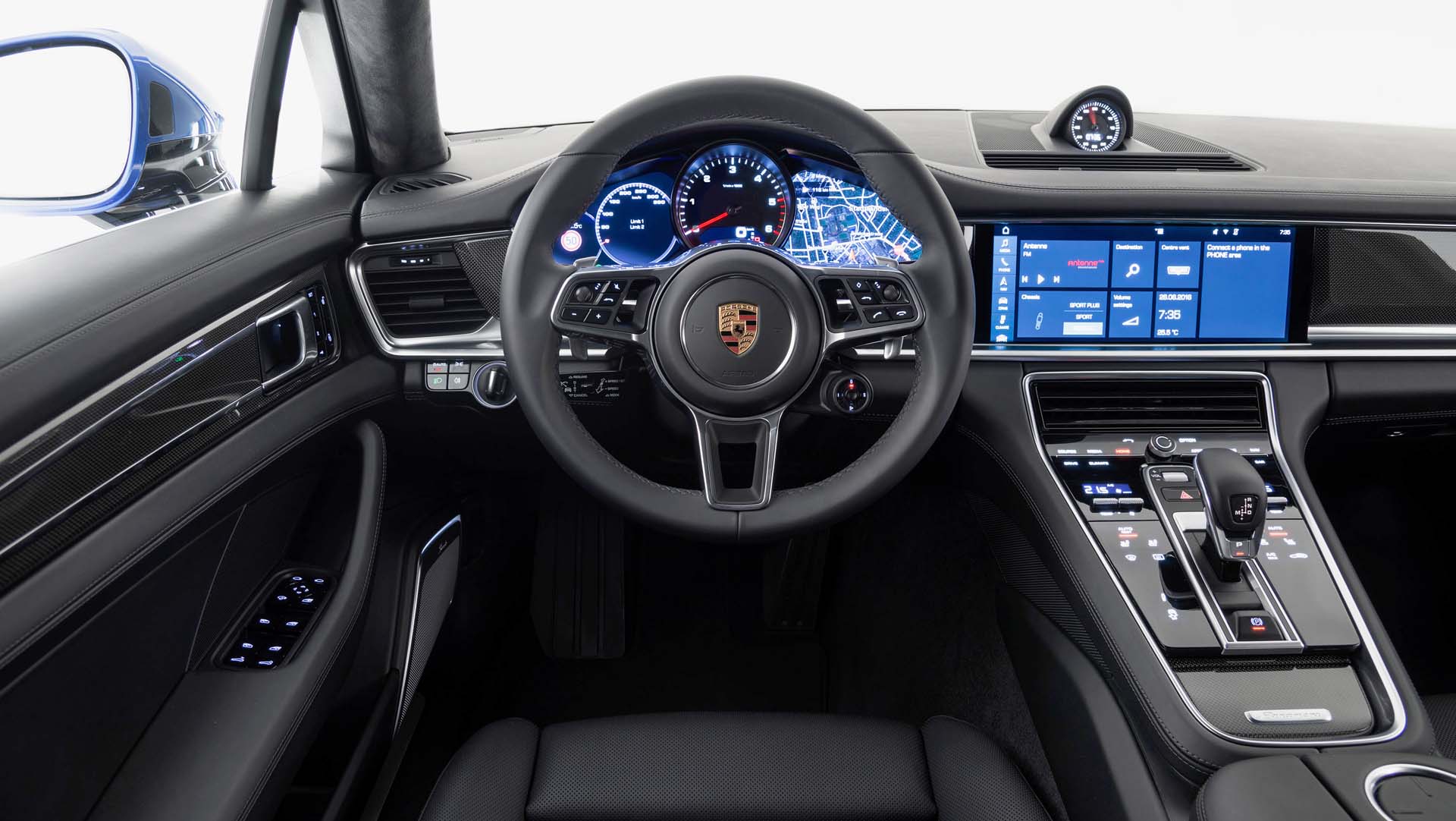
The differences between the new and old Porsche Panamera are of course more than just skin deep. Peel back the aluminium shell of the sedan and you'll discover... even more aluminum, mated to the high-strength steel of the car's crash structure using advanced fabrication techniques that include adhesives, crimping, and high-speed screw systems that actually melt dissimilar metals together to form a permanent bond.
A tour of the Porsche Panamera plant in Leipzig was illuminating, not just from the perspective of how much care and thought has been invested into truly improving the vehicle's platform, but also regarding the intensive quality assurance and inspection process that each model undergoes before it's released into the wilds of the retail environment. Again, the old and the new form a symbiotic bond at Porsche when it comes to spotting and correcting defects on the line. As effective as laser scanning and augmented reality are in the QA toolkit, the human eye itself can detect a dent of only 1/100 of a millimetre on an unpainted panel, making our own unagumented senses an important weapon in Porsche's quest for perfection.
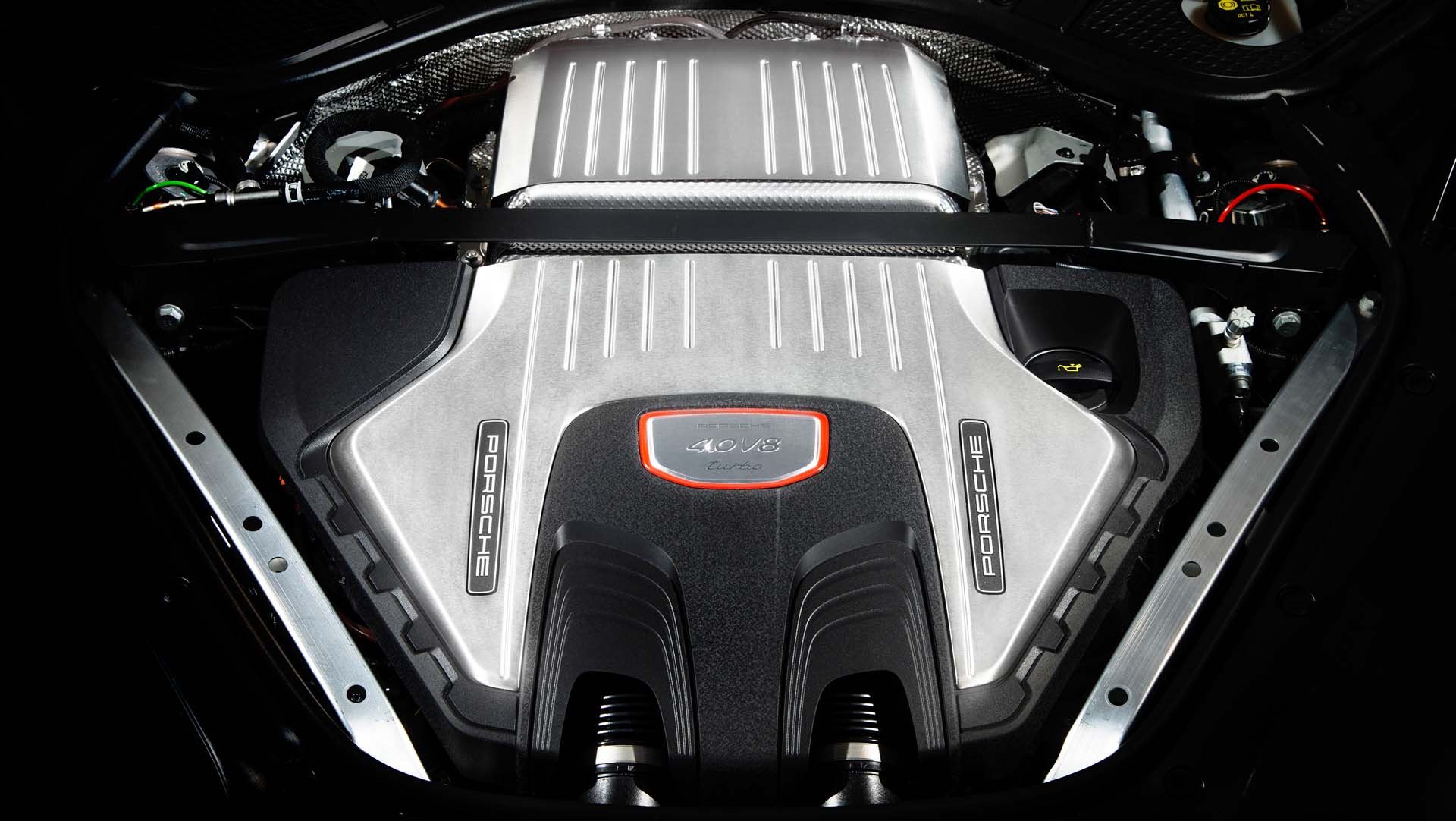
While much attention was lavished on the 2017 Porsche Panamera's cosmetics, materials, and infotainment technology (including the latest version of PCM), even greater focus was placed on the sedan's two new drivetrain options. Moving forward, the Panamera 4S (which will be amongst the first two models sent to Canadian dealerships) graduates to a 2.9 L twin-turbo V6 that pushes out a hefty 440 horsepower and 405 lb-ft of torque, all of which is available starting at only 1,750 rpm. The Porsche Panamera Turbo adds a 110 ponies on top of what's available in the 4S by way of its fresh 4.0 L V8, which itself is turbocharged to the tune of 550 hp with 567 lb-ft of twist.
A modest increase of roughly five percent might not seem like much to get excited about, but that ignores the fact that each of these engines offers smaller displacement than the ones they are replacing – and, Porsche claims, better fuel efficiency too. An eight-speed dual-clutch automated manual transmission makes its debut in the Panamera, and all-wheel drive is standard. The Panamera 4S leaps to 100 km/h in 4.4 seconds, and if you're in more of a hurry, the Turbo will get you there in just 3.8.
Until now, the Porsche Panamera has been aimed primarily at those who were either Porsche devotees searching for a usable rear seat, or well-heeled luxury buyers looking to go against the current and drive something other than a Mercedes-Benz, Audi, or BMW. That counter-culture spirit is still very much alive with the 2017 edition of the Porsche sedan (which is priced at $114,300 for the 4S and $167,700 for the Turbo), but the Panamera's more palatable looks should allow it to expand its reach in the premium world. Call it evolution, call it maturity: what matters is that this Porsche is moving forward on the styling front without turning its back on the blistering performance and top-notch accommodations that have defined its past.


